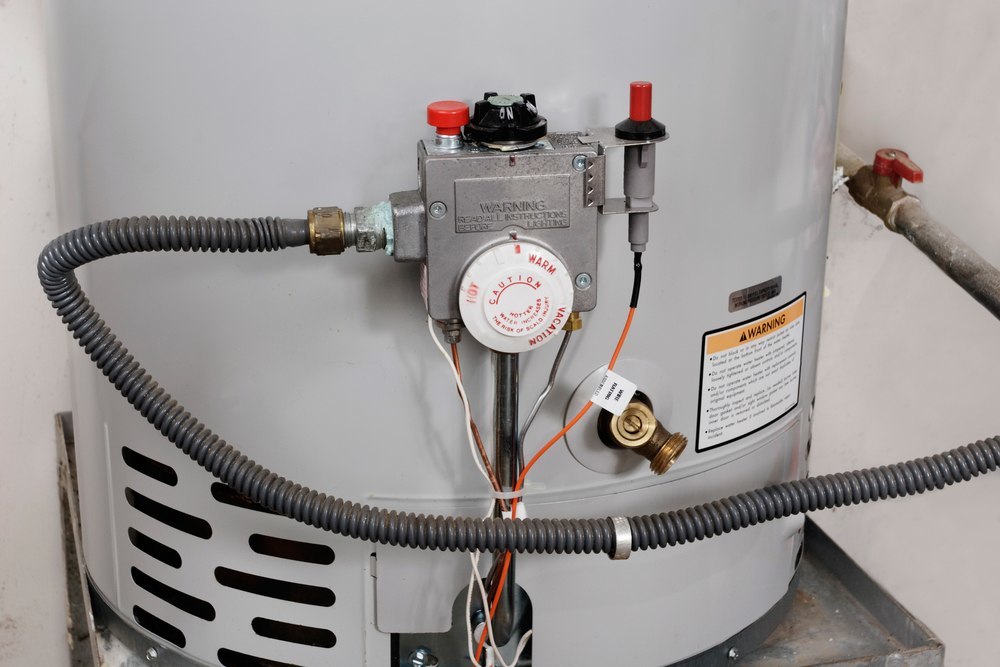 When you’re looking for ways to cut down on your home’s energy usage, the first places you’ll probably think to look are your heating and cooling systems. Heating and cooling costs typically account for the largest percentage of a home’s utility bills. Doing simple things like turning the thermostat down in the winter, running the air conditioner less in the summertime, and replacing drafty windows with new vinyl replacement windows can help you save quite a bit of money in the long run. But once you’ve done that, the next best place to look would be your home’s water heater.
When you’re looking for ways to cut down on your home’s energy usage, the first places you’ll probably think to look are your heating and cooling systems. Heating and cooling costs typically account for the largest percentage of a home’s utility bills. Doing simple things like turning the thermostat down in the winter, running the air conditioner less in the summertime, and replacing drafty windows with new vinyl replacement windows can help you save quite a bit of money in the long run. But once you’ve done that, the next best place to look would be your home’s water heater.
Water heaters typically account for 14% to 18% of a home’s total energy costs, so taking steps to help your water heater more efficient could help save you a good amount of money, too. Here are a few ways you could help bring that number down and keep more money in your pocket.
Adjust the Temperature
What temperature is your water heater set to? If it’s currently set to anything over 120℉, lowering the temperature is a great way to cut down on the amount of energy your water heater needs. For every 10℉ you lower your water heater, you could reduce the amount of energy your water heater needs by between 3% and 5%. Many water heaters are installed set at 140℉, but the Consumer Product Safety Commission and the Environmental Protection Agency recommend 120℉ for most households. This temperature helps save money while keeping your water warm enough to prevent pathogens and bacteria from growing, but not so hot that people will get scalded.
However, there are a few circumstances where you might want to keep your water heater set at 140℉. If you have a chronic respiratory disease or a suppressed immune system, keeping set at 140℉ will more effectively prevent bacteria from growing in your water. If you have an older dishwasher that doesn’t have a booster heater, a temperature of 130℉ or 140℉ will help ensure your dishes are cleaned properly.
Insulate Your Tank
One way that your water heater wastes energy is through standby heat loss. As water sits in your water heater’s tank waiting to be used, it will naturally start to cool down, which will prompt your water heater to start heating the water up again. Many modern water heaters have a good amount of insulation to help keep the water in the tank warmer longer, but if you have an older water heater, wrapping it in an insulated blanket can help reduce standby heating losses. If you have an electric water heater, be careful your insulated blanket doesn’t block the thermostat. If you have a gas powered water heater, make sure the blanket doesn’t cover the burner compartment or thermostat or the top or bottom of the tank.
Drain the Sediment
Over time, water heaters often accumulate a sediment on the inside of the tank. When this sediment builds up, it can make it harder for water heaters to run efficiently. To prevent sediment from building up, it’s good to drain about a quart of water from your water heater tank every three months.
If you have an electric water heater, you’ll need to start by shutting off its power. If you have a gas powered water heater, set the burner to “Pilot.” Then, turn off the water heater’s water supply source. Go turn on the hot water faucet in a sink or bathtub in another area of the house and let it run to help prevent a vacuum from forming in the plumbing lines. Attach a garden hose to the spigot at the base of your water heater’s tank and let it run into either a bucket or the floor drain. Find the pressure relief valve on your water heater and adjust it to let some water out. Remember, you don’t need to drain very much water. A quart of water is plenty!
By following these simple steps, you should start to see a nice reduction in your home’s energy bills over time.
